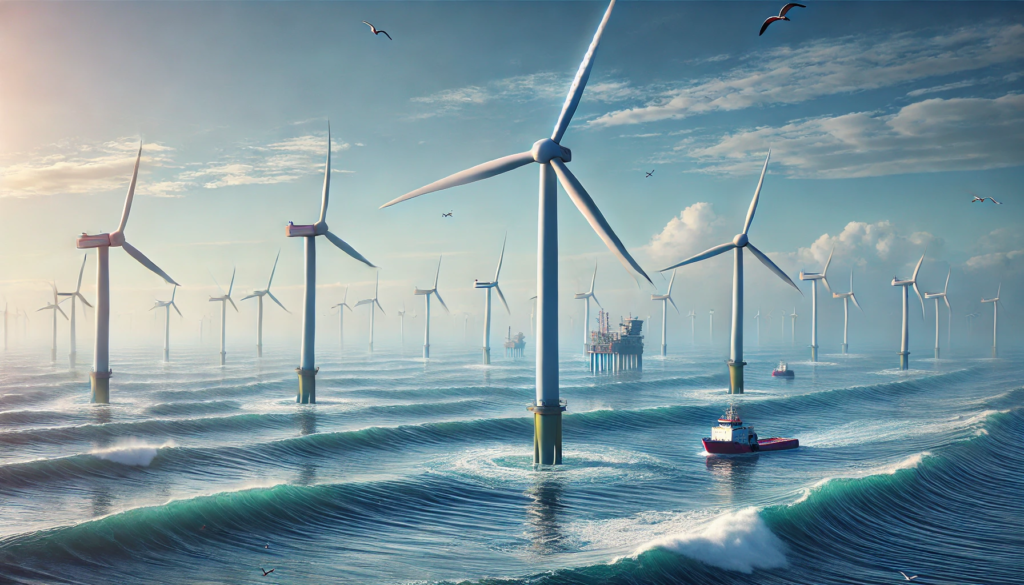
Offshore wind power stations, also known as offshore wind farms, have emerged as a critical component of the renewable energy landscape. Located in bodies of water, usually on the continental shelf, these installations harness the kinetic energy of wind over the ocean to generate electricity. The effectiveness of these offshore wind power stations is evaluated based on several scientific, environmental, and economic factors.
Higher Wind Speeds and Consistency
One of the primary advantages of offshore wind farms is the higher wind speeds available over the ocean compared to onshore locations. Wind speeds offshore are typically more consistent and stronger, which leads to higher capacity factors. The capacity factor is a measure of how often a wind turbine operates at maximum power. On average, offshore wind farms have a capacity factor of around 45-50%, compared to about 30-35% for onshore wind farms.
Larger Turbines and Improved Technology
Offshore locations allow for the installation of larger turbines than those typically used onshore. These turbines can generate more electricity per unit, leveraging advancements in technology that have led to the development of turbines with capacities exceeding 10 MW. For instance, the Haliade-X turbine by GE can produce up to 12 MW, capable of powering 16,000 homes.
Reduced Visual and Noise Impact
A significant advantage of offshore wind farms is the reduced visual and noise impact on human populations. This alleviates one of the major concerns associated with onshore wind farms, which is their impact on landscapes and residential areas. Offshore installations can be placed far enough from the coast to be out of sight and hearing range, making them more socially acceptable.
Environmental Considerations
While offshore wind farms have a lower visual and noise impact, their environmental implications are not negligible. The construction and maintenance of these farms can affect marine life, including fish and bird populations. Careful planning and environmental assessments are necessary to minimize these impacts. Studies have shown that while there are some adverse effects, they are generally lower than the impacts associated with fossil fuel energy sources.
Economic Factors and Energy Output
The economic effectiveness of offshore wind power is influenced by the high initial costs of installation and maintenance. Offshore wind farms require substantial investment due to the complex logistics of building and maintaining structures in the marine environment. However, the long-term benefits include substantial energy output and low operating costs once the farms are operational. Offshore wind power can provide a significant portion of a country’s energy needs. For example, the United Kingdom’s offshore wind farms generated approximately 10% of the country’s electricity in 2020, with plans for further expansion.
Integration with the Energy Grid
Integrating offshore wind power into the existing energy grid presents both challenges and opportunities. The variability of wind power requires grid operators to have flexible and responsive systems to manage supply and demand. Advances in energy storage technologies and smart grid systems are critical to maximizing the effectiveness of offshore wind power. Additionally, offshore wind farms can be located relatively close to major urban centers, reducing transmission losses and costs.
Global Potential and Future Prospects
The global potential for offshore wind energy is immense. The International Energy Agency (IEA) estimates that offshore wind could generate more than 420,000 TWh per year worldwide, which is more than 18 times the current global electricity demand. Regions such as Europe, East Asia, and the eastern coast of the United States are particularly well-suited for offshore wind development.
Countries are increasingly recognizing the importance of offshore wind in their energy mix. For instance, the European Union aims to increase its offshore wind capacity to 60 GW by 2030 and 300 GW by 2050 as part of its Green Deal. China is also rapidly expanding its offshore wind capacity, with plans to install 30 GW by 2025.
Conclusion
Offshore wind power stations are an effective and essential component of the transition to renewable energy. They offer higher capacity factors due to stronger and more consistent wind speeds, allow for the deployment of larger turbines, and have less visual and noise impact compared to onshore wind farms. While there are environmental and economic challenges, the long-term benefits and potential for significant energy output make offshore wind a promising solution for meeting future energy demands sustainably. As technology continues to advance and costs decline, offshore wind is poised to play a crucial role in global energy systems.
Leave a Reply